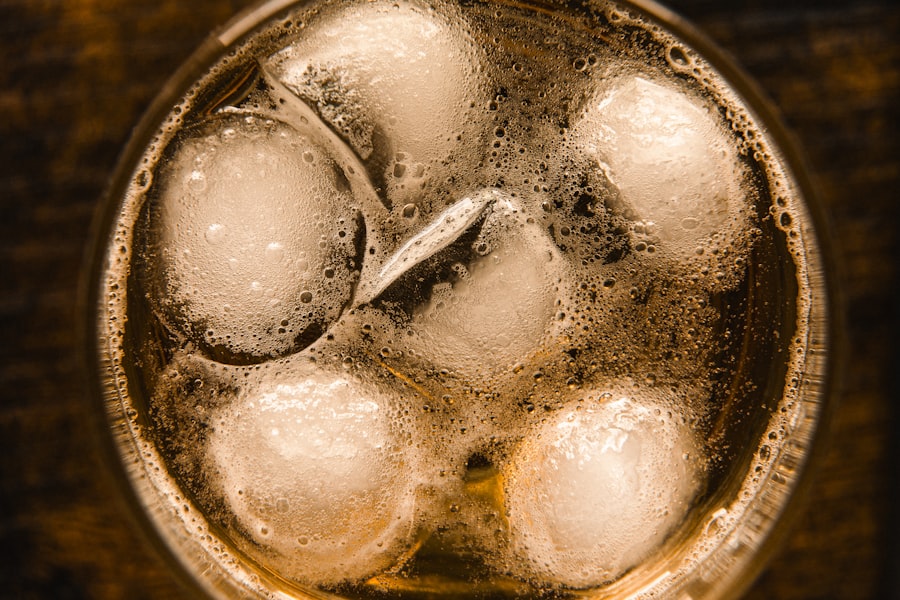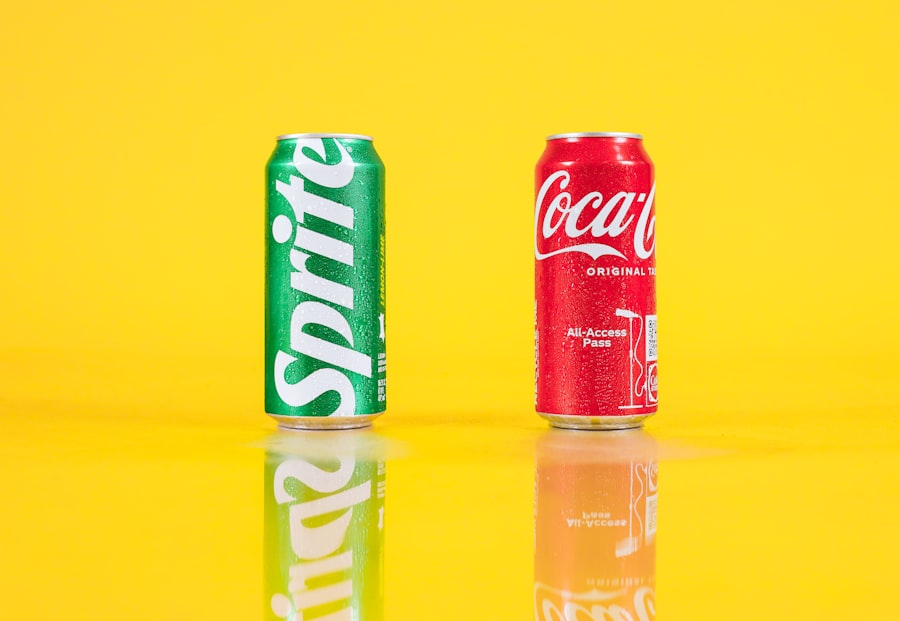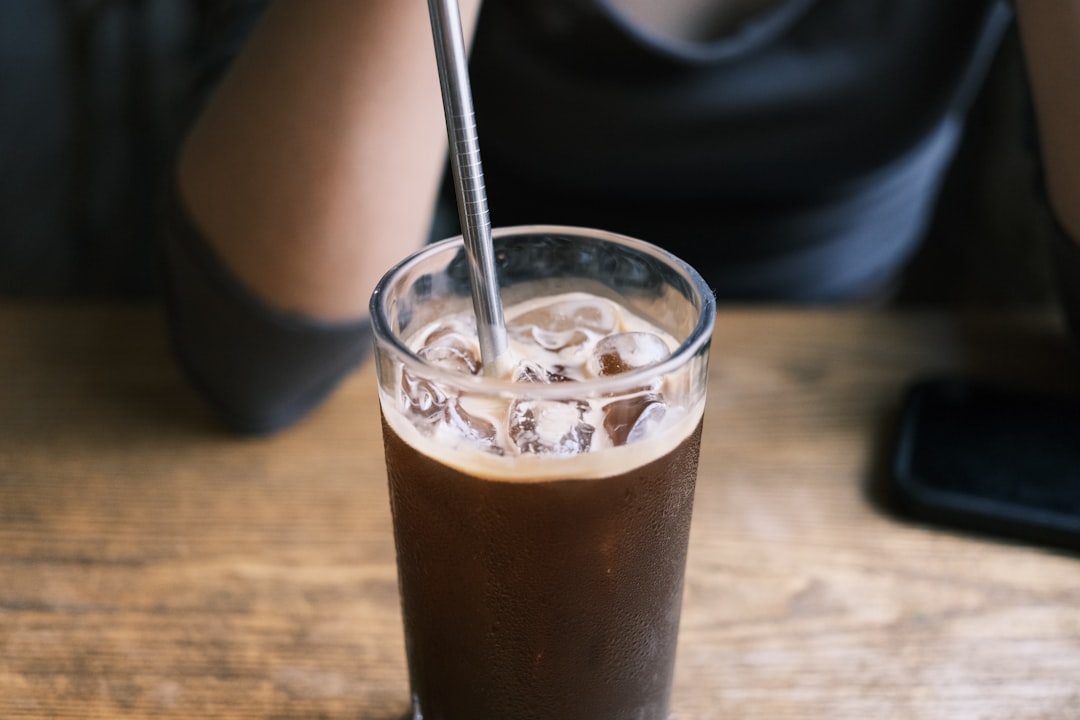When you think about your daily beverage choices, sugary drinks might not seem like a significant concern. However, the impact of these beverages on your health can be profound. Consuming high amounts of sugar-laden drinks can lead to a variety of health issues, including obesity, type 2 diabetes, and heart disease.
Each time you reach for a soda or a sweetened iced tea, you may be unknowingly contributing to these risks. The high calorie content in sugary drinks often leads to weight gain, as they provide little to no nutritional value. This means that while you may be satisfying your thirst momentarily, you are also adding empty calories to your diet that can have long-term consequences.
Moreover, sugary drinks can affect your mood and energy levels. The quick spike in blood sugar that comes from consuming these beverages is often followed by a crash, leaving you feeling fatigued and irritable. This cycle can lead to a reliance on sugar for energy, creating a pattern that is hard to break.
Understanding the impact of sugary drinks is the first step in making healthier choices. By recognizing how these beverages affect your body and mind, you can begin to take control of your health and make informed decisions about what you consume.
Key Takeaways
- Sugary drinks can have a significant impact on overall health, including weight gain and increased risk of chronic diseases.
- Many beverages contain hidden sugars, so it’s important to carefully read labels and be aware of common sugary ingredients.
- Setting realistic goals for reducing sugary drink intake can help make the process more manageable and sustainable.
- Substituting sugary drinks with healthier options, such as infused water or unsweetened tea, can help reduce sugar consumption.
- Reading labels and making informed choices about beverage options can empower individuals to make healthier decisions.
Identifying Hidden Sugars in Beverages
As you navigate the world of beverages, it’s crucial to become adept at identifying hidden sugars. Many drinks that appear healthy at first glance can be deceptively high in sugar content. For instance, fruit juices may seem like a nutritious choice, but they often contain as much sugar as soda.
When you read labels, you might be surprised to find that even seemingly innocent smoothies or flavored waters can pack a sugary punch. This realization can be eye-opening and may prompt you to reconsider what you drink on a daily basis. To effectively identify hidden sugars, familiarize yourself with the various names that sugar can go by on ingredient lists.
Terms like high fructose corn syrup, cane sugar, and agave nectar are just a few examples of the many forms sugar can take. By learning to spot these ingredients, you empower yourself to make better choices. It’s not just about avoiding obvious sugary drinks; it’s about being vigilant and informed about everything you consume.
This knowledge will serve you well as you work towards reducing your overall sugar intake.
Setting Realistic Goals for Reducing Intake

Setting realistic goals is essential when it comes to reducing your intake of sugary drinks. It’s easy to feel overwhelmed by the prospect of cutting out all sugary beverages at once, but this approach can often lead to frustration and failure. Instead, consider starting small. Perhaps you could aim to replace one sugary drink per day with a healthier option or gradually decrease the number of sugary beverages you consume each week. By setting achievable goals, you create a sense of accomplishment that can motivate you to continue making positive changes. Additionally, it’s important to track your progress as you work towards these goals. Keeping a journal or using an app to log your beverage choices can help you stay accountable and recognize patterns in your consumption. Celebrate small victories along the way, whether it’s going a week without soda or choosing water over juice at a restaurant. These milestones will reinforce your commitment and encourage you to keep pushing forward on your journey toward healthier drinking habits.
Substituting Sugary Drinks with Healthier Options
| Drink Options | Calories per Serving | Sugar Content per Serving | Benefits |
|---|---|---|---|
| Water | 0 | 0g | Hydration, no added sugar |
| Green Tea | 0 | 0g | Antioxidants, metabolism boost |
| Sparkling Water | 0 | 0g | Refreshing, no added sugar |
| Homemade Fruit Infused Water | 0 | 0g | Natural flavor, no added sugar |
Finding healthier alternatives to sugary drinks is a crucial step in your journey toward better health. You don’t have to feel deprived; there are plenty of delicious options available that can satisfy your cravings without the added sugar. For instance, sparkling water with a splash of lemon or lime can provide the fizz you crave without the calories.
Herbal teas, served hot or iced, offer a flavorful alternative that can be enjoyed any time of day. Experimenting with different flavors and combinations can make this transition enjoyable rather than burdensome. Another great substitute is infused water, where you can add fruits like berries, cucumber, or mint to plain water for a refreshing twist.
This not only enhances the flavor but also encourages you to drink more water throughout the day. By incorporating these healthier options into your routine, you’ll find that your cravings for sugary drinks begin to diminish over time.
Reading Labels and Making Informed Choices
Becoming proficient at reading labels is an invaluable skill when it comes to making informed choices about what you drink. When you pick up a beverage, take a moment to examine the nutrition facts and ingredient list carefully. Pay attention not only to the total sugar content but also to the serving size; sometimes what seems like a reasonable amount of sugar is actually based on a smaller serving than you might consume in one sitting.
Understanding these details will help you make better decisions and avoid inadvertently consuming more sugar than intended. In addition to sugar content, consider other factors such as calories, artificial ingredients, and preservatives. A drink may be low in sugar but high in calories or filled with additives that aren’t beneficial for your health.
By taking the time to read labels thoroughly, you empower yourself to choose beverages that align with your health goals. This practice will become second nature over time and will significantly enhance your ability to make healthier choices in all areas of your diet.
Creating a Supportive Environment for Cutting Back

Creating a supportive environment is essential for successfully cutting back on sugary drinks. Start by evaluating your home and workplace settings; if sugary beverages are readily available, it may be more challenging for you to resist temptation. Consider removing these drinks from your refrigerator or pantry and replacing them with healthier options like flavored seltzers or herbal teas.
When your environment supports your goals, it becomes easier to stick to them. Additionally, seek support from friends and family who understand your desire to reduce sugary drink consumption. Share your goals with them and encourage them to join you on this journey.
Having an accountability partner can make all the difference when cravings strike or when you’re tempted by social situations that involve sugary beverages. Together, you can celebrate successes and navigate challenges, making the process more enjoyable and sustainable.
Managing Cravings and Withdrawal Symptoms
As you begin to cut back on sugary drinks, it’s natural to experience cravings or withdrawal symptoms. Your body may have grown accustomed to the quick energy boost that sugar provides, leading to feelings of fatigue or irritability when you reduce your intake. Recognizing these symptoms as part of the process is crucial; they are temporary and will subside as your body adjusts to lower sugar levels.
To manage cravings effectively, consider employing strategies such as staying hydrated and eating balanced meals that include protein and healthy fats. These foods can help stabilize blood sugar levels and keep cravings at bay. Additionally, finding distractions—whether through physical activity or engaging hobbies—can help redirect your focus when cravings arise.
Remember that this journey is about progress, not perfection; it’s okay to have moments of weakness as long as you remain committed to your overall goal.
Finding Enjoyable Alternatives to Sugary Drinks
Finding enjoyable alternatives to sugary drinks is key in making lasting changes to your beverage choices. Explore various options that excite your taste buds while keeping sugar content low. For example, consider trying different types of herbal teas or experimenting with homemade smoothies using unsweetened yogurt and fresh fruits.
You might also enjoy creating mocktails using sparkling water mixed with fresh fruit juices or herbs for added flavor without excessive sugar. Another fun alternative is experimenting with homemade flavored ice cubes made from pureed fruits or herbal infusions. These can be added to water or iced tea for an extra burst of flavor without added sugars or artificial ingredients.
The more creative you get with these alternatives, the more likely you are to find options that satisfy your cravings while supporting your health goals.
Incorporating More Water into Your Daily Routine
Incorporating more water into your daily routine is one of the simplest yet most effective ways to reduce sugary drink consumption. Water is essential for overall health and can help curb cravings for sweet beverages when consumed regularly throughout the day. Start by setting specific goals for water intake; for instance, aim for eight glasses per day or carry a reusable water bottle with you wherever you go as a reminder to stay hydrated.
You might also consider setting reminders on your phone or using apps designed to track water intake. These tools can help keep hydration at the forefront of your mind and encourage consistent drinking habits. Additionally, try drinking a glass of water before meals; this practice not only helps with hydration but may also reduce the likelihood of reaching for sugary drinks out of thirst during mealtime.
Tracking Progress and Celebrating Successes
Tracking your progress is an essential part of any lifestyle change, especially when it comes to reducing sugary drink intake. Keeping a journal or using an app allows you to monitor not only what you drink but also how you feel physically and emotionally throughout this journey. By documenting your experiences, you’ll gain valuable insights into patterns in your consumption and how they correlate with cravings or energy levels.
Celebrating successes—no matter how small—is equally important in maintaining motivation. Whether it’s treating yourself to a new water bottle after reaching a milestone or sharing your achievements with friends and family, acknowledging progress reinforces positive behavior changes. Remember that every step counts; even reducing one sugary drink per week is a victory worth celebrating.
Seeking Professional Help if Needed
If you find yourself struggling despite your best efforts to cut back on sugary drinks, seeking professional help may be beneficial. Nutritionists or dietitians can provide personalized guidance tailored specifically to your needs and goals. They can help identify underlying issues related to cravings or emotional eating patterns that may be contributing to your reliance on sugary beverages.
Additionally, support groups or counseling services focused on nutrition and healthy habits can offer encouragement and accountability as you navigate this journey. Remember that asking for help is not a sign of weakness; rather, it demonstrates strength and commitment to improving your health and well-being. With the right support system in place, you’ll be better equipped to overcome challenges and achieve lasting change in your beverage choices.
Reducing sugar-sweetened beverage intake is crucial for maintaining a healthy lifestyle, especially for seniors who are more susceptible to health issues like diabetes and heart disease. One effective strategy is to gradually replace sugary drinks with healthier alternatives such as water, herbal teas, or infused water with fruits. For more detailed tips and strategies on how to cut down on sugar-sweetened beverages, you can read a related article on this topic by visiting Explore Senior Health. This resource provides valuable insights and practical advice tailored to the needs of seniors looking to improve their dietary habits.
FAQs
What are sugar-sweetened beverages?
Sugar-sweetened beverages are drinks that have added sugars, such as soda, fruit drinks, energy drinks, and sweetened coffee and tea.
Why is it important to reduce sugar-sweetened beverage intake?
Consuming too many sugar-sweetened beverages can lead to weight gain, obesity, type 2 diabetes, heart disease, and other health problems.
How can I reduce my sugar-sweetened beverage intake?
You can reduce your intake of sugar-sweetened beverages by choosing water, unsweetened tea or coffee, and 100% fruit juice instead. You can also limit the availability of sugary drinks in your home and workplace.
What are some alternatives to sugar-sweetened beverages?
Some alternatives to sugar-sweetened beverages include water, unsweetened tea or coffee, 100% fruit juice, and low-fat or fat-free milk.
What are the benefits of reducing sugar-sweetened beverage intake?
Reducing sugar-sweetened beverage intake can help lower your risk of obesity, type 2 diabetes, heart disease, and other health problems. It can also help you maintain a healthy weight and improve your overall health.
